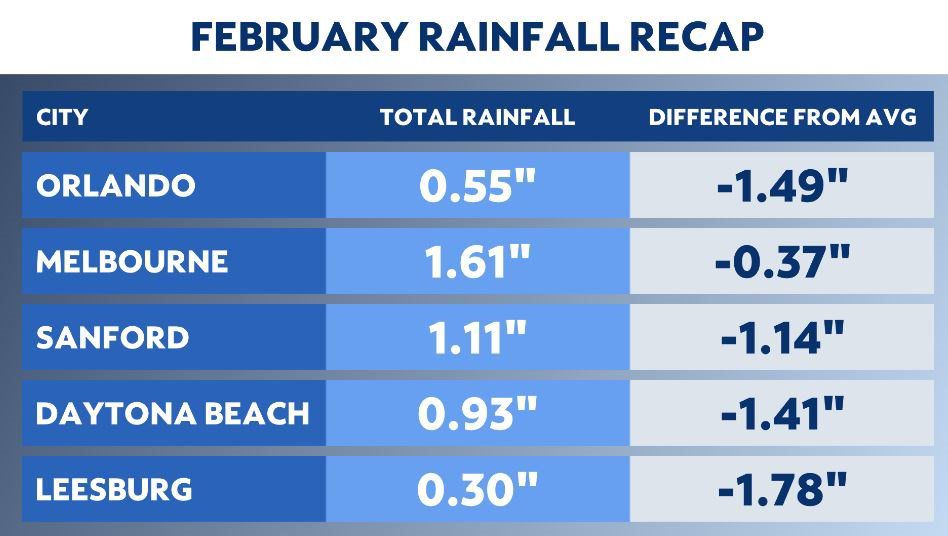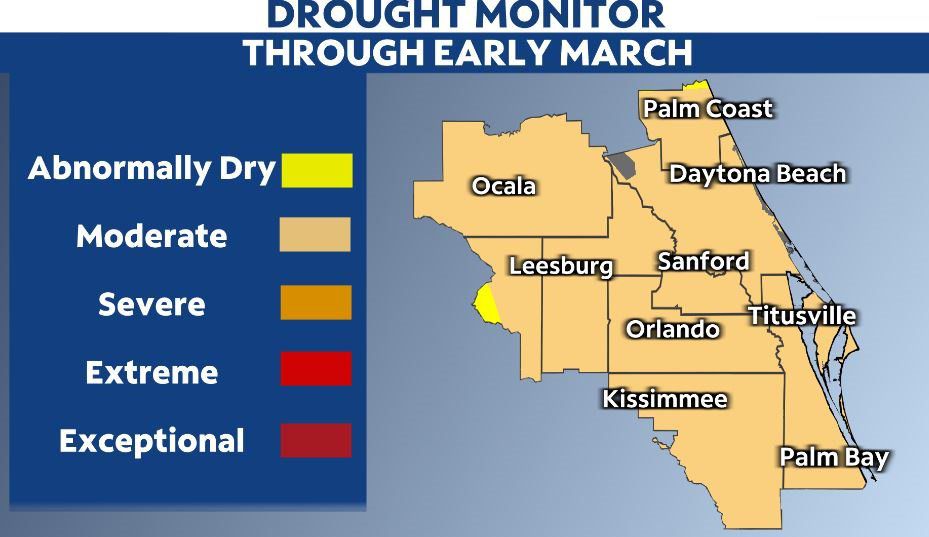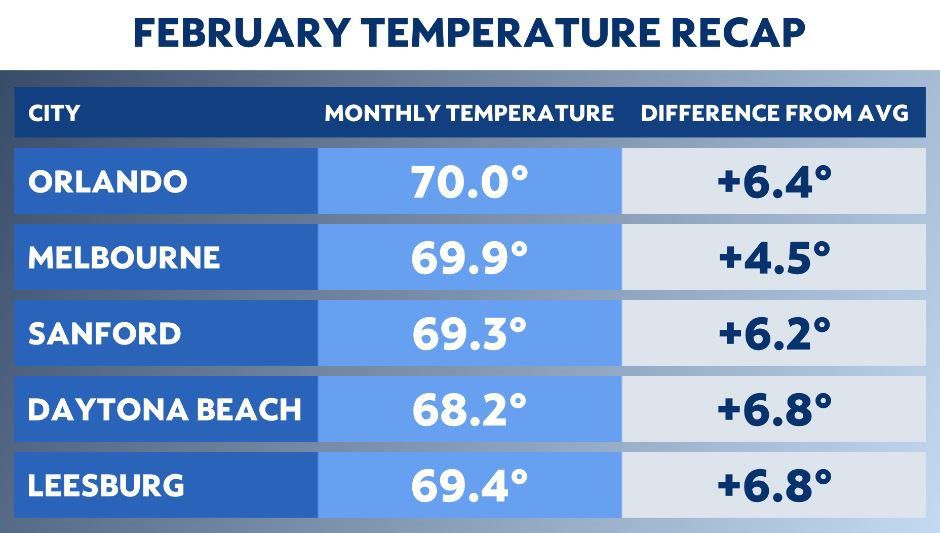In general, February felt more like April or May in Central Florida- and it certainly ranked among one of the warmest for many areas.
These spring-like temperatures led to this February being the third warmest on record for Orlando. Out of the 28 days of the month, 20 days saw afternoon highs reach at or above the 80-degree mark in the City Beautiful. The average collective temperature for the month was 70 degrees.
That is tied for the third most 80-degree days on record for the month. February 2018 still holds the title for seeing the most 80-degree days, with a total of 22 that year.
Daytona Beach and Sanford also felt their third warmest February on record, where it was Melbourne’s fourth warmest.
Meanwhile, Leesburg led the way with its second warmest February on record, along with its driest.
Rainfall severally lacked across the region the entire month.
Rainfall deficits continued to grow, which led to drought conditions expanding across most of east central Florida by the month’s end.
The most rain Leesburg recorded in a single day was 0.23 inches on Feb. 10.
The city of Leesburg was 1.78 inches drier than normal, with Feb. 10 seeing the most rainfall in a day- only 0.23 inches.
Orlando finished the month nearly 1.50-inch deficit as well. The city’s single largest rainfall total came all the way back on Feb. 3, when only 0.22 inches of rain was measured.

But it was nowhere close to being the driest on record for the City Beautiful, which ended up picking up a total of 0.55 inches for the month.
The driest on record only saw 0.11 inches of rain all month long back in 1911.

Our team of meteorologists dives deep into the science of weather and breaks down timely weather data and information. To view more weather and climate stories, check out our weather blogs section.

